Our house is now feeling a bit empty. Emmett was the last of a host of pets that Dave and I have had the pleasure of knowing over the last 11 years. At 15-1/2, he was the oldest of them all. His sister, Jupiter, passed away a little over 2 years ago, just shy of her 13th birthday.
Amid all the bird songs that I hear daily now that are a sure promise of spring, a certain stillness hangs in the air. It's hard to adjust to not having a wagging tail and happy puppy to greet us when we get home from work. But instead of focusing on the things that are difficult, let me share some happier memories with you, memories of both Emmett and Jupiter.
I didn't know them as puppies, unfortunately - they were already full-grown by the time Dave and I started dating. I met them both the first time I came to Dave's place, and they were both very accepting of me, which was something that I felt was important if Dave and I were going to be a couple. I was especially grateful that Jupiter, the "other" girl in his life, took a liking to me.
They were both very cute adults, but as puppies... well, it was just ridiculous.
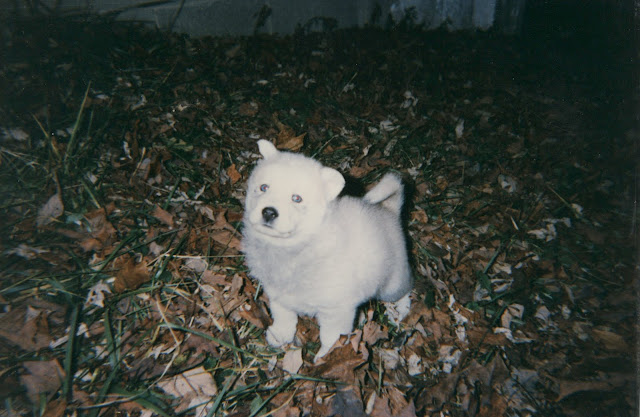
Emmett was quite a little ball of fluff. It took him a little while to grow into his face and his ears, though.
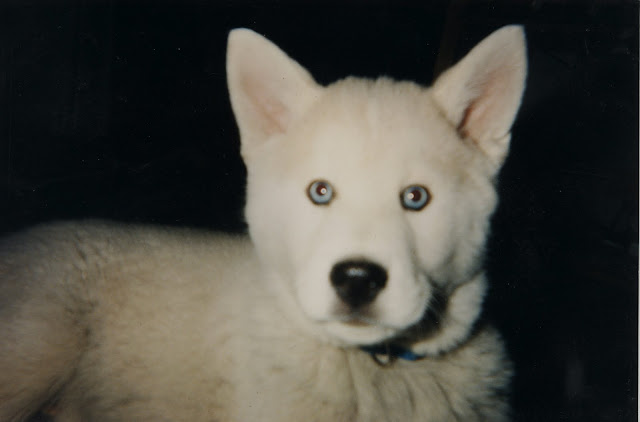
Emmett in his "adolescence."

And Jupiter in hers.
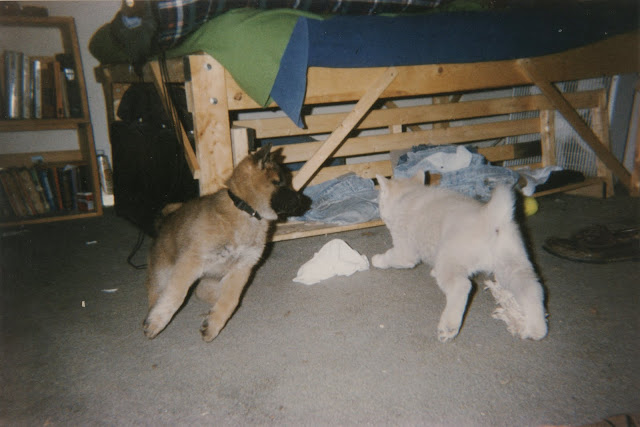
They loved to chase each other and play. I can't tell who's chasing who here, but I can hear them going "nyyeeeaaawwwwwrrr," round and round in circles!
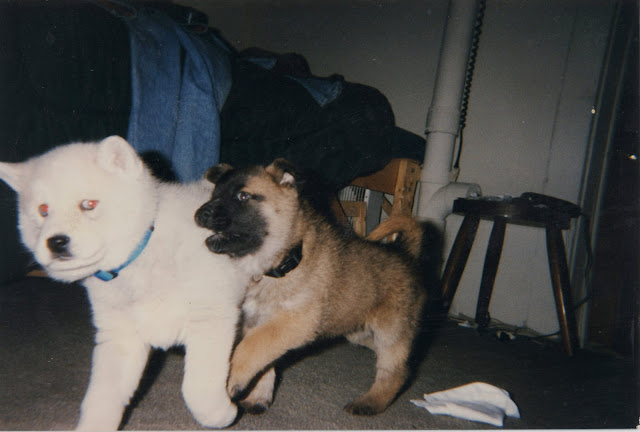
They also liked to bite on each other, especially Jupiter on Emmett. This is when they were wee pups...
... and as adults. It's a move Jupiter would repeat over...
... and over. Eventually, many years into adulthood, Emmett finally developed a strategy to shake her off when she chomped on him like this, and it was a move that I called the "butt block." Actually, it was more of a hip block, where he'd ram his hip into her to get her off of him, but "butt block" sounds way more fun.
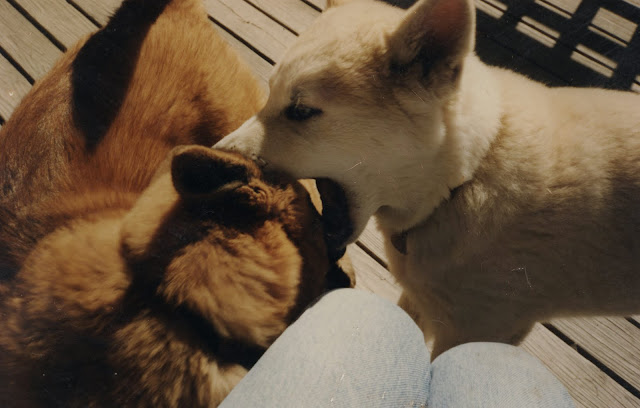
This isn't to say that he didn't get his own chomps in on her, though!
Their exact lineage is unknown, but "husky mix" was the breed reference we always gave. Having husky blood meant they liked to roam, often quite far from home. They always came back, but Dave and Jupiter one day learned the hard way that some folks don't take kindly to having strange dogs on their property. Jupiter got shot in her rear left leg, and fragments of the bullet stayed with her until the end. Living on 8 acres in the country made containing the dogs a challenge, to say the least. A radio fence was employed after the shooting incident, but both Emmett and Jupiter were masters at finding ways to get through the field of the fence, and they were always testing it, waiting for those times when a rodent chew or a deer run-through caused a break in the line, leaving the whole system down.
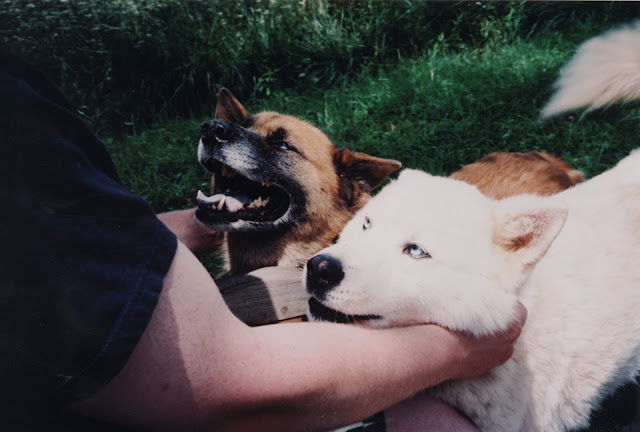
The day Dave asked me to marry him, the dogs "broke out" and came over into the field where we were (across the road from the house) to congratulate us. They didn't want to be left out! This was one time that we didn't mind that they were naughty dogs who disobeyed the rules.
Overall, they were good dogs. For as long as I knew them, they were outside dogs 90% of the time (with plenty of shelter available when they needed it, of course), and they seemed very content being that way.
They both loved the snow...
... and they both loved a good leaf pile.
And we loved them both very, very much. Two weeks before Emmett reached his end, I was able to get some nice photos of him. When I look at this photo now, it still tugs at my heart strings, but it also makes me smile. It captures his essence very well.
We miss you, dear friend. Rest in peace.
